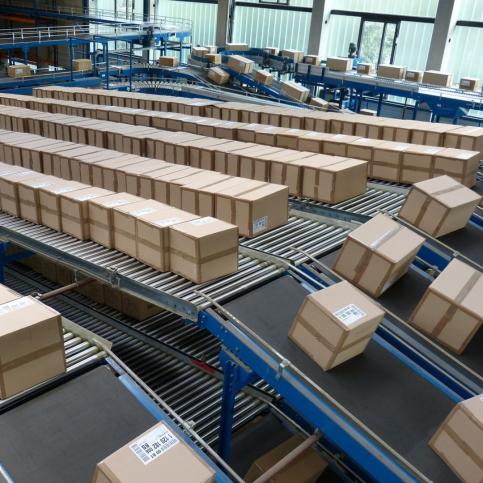
How To Properly Design A Conveyor To Reduce Musculoskeletal Disorders?
The material handling industry uses a combination of manual labour and automation to transport goods from one place to another. However, the increased reliance on manual labour has led to the development of several musculoskeletal disorders and workplace injuries. One good way to reduce these risks is by using conveyor systems in the operations. However, an ill-designed conveyor can do more harm than good. Therefore, here are a few things a conveyor designer can leverage to create more ergonomically designed systems.
4 Ways To Make Conveyors Ergonomic And Safe
The main thing to consider here is that a worker should not have to lift or move or orient the load in any way from the conveyor before processing. To do this, here are some effective solutions:
1. Add Ball Transfers, Scissor Lifts or Turntables
Opting for ball transfers and turntables makes it easier to turn or orient the product, reducing physical stress on the worker. Other than orienting horizontally, one can also integrate scissor lifts in these stations to achieve the optimal height for lifting and moving the products.
2. Calibrate Worksurface Height
Worksurface height can be defined as the distance between the floor to the top surface of a belt or roller conveyor. While you can incorporate scissor lifts to make minor adjustments, the worksurface height should be fixed and optimal to ensure easy handling and access by the workers.
3. Eliminate Stretching By Calculating Reach Distance
Reach distance can be defined as the distance between the load and the edge of the conveyor. Essentially, it shouldn’t be too larger so as to necessitate bending or stretching to retrieve the item. Therefore, it's best to design a system where front and side stretching is avoided.
4. Find An Average Working Height
An average working height is a height that is optimal for hands to carry and transfer products without any bending or stretching. The idea is to avoid leaning over the conveyor and reduce the chances of workplace mishaps, as loose clothing might snag in a running conveyor.
Therefore, with a combination of the right equipment and the correct calibration of height and distance, a conveyor be made as ergonomic as possible to avoid workplace injuries.
Looking to improve your manufacturing operations? Reach out to us at Norpak Handling. With decades of experience in offering material handling products and services across North America, Norpak Handling has built a reputation for providing quality conveyor equipment and solutions. Contact our experts today and remove all the guesswork when it comes to selecting a conveyor.









